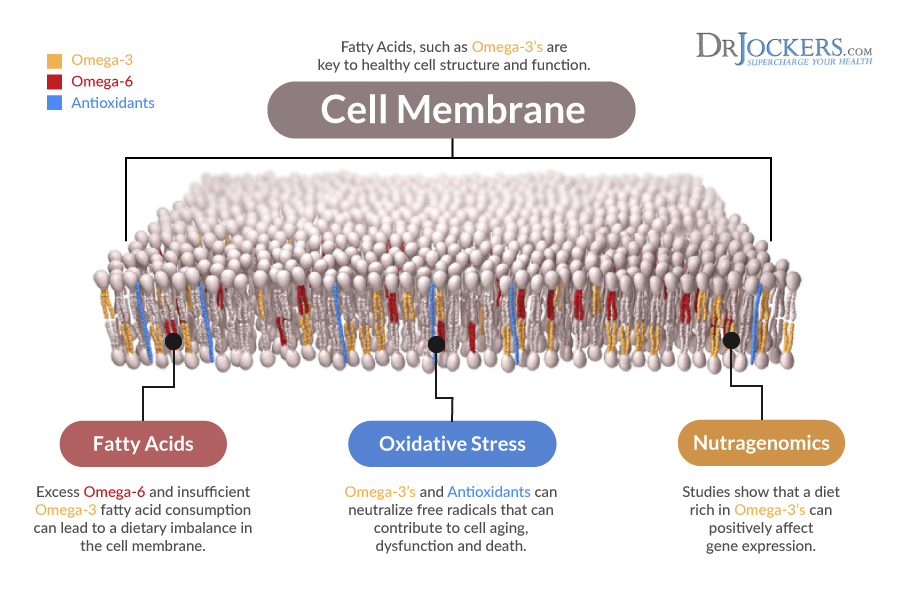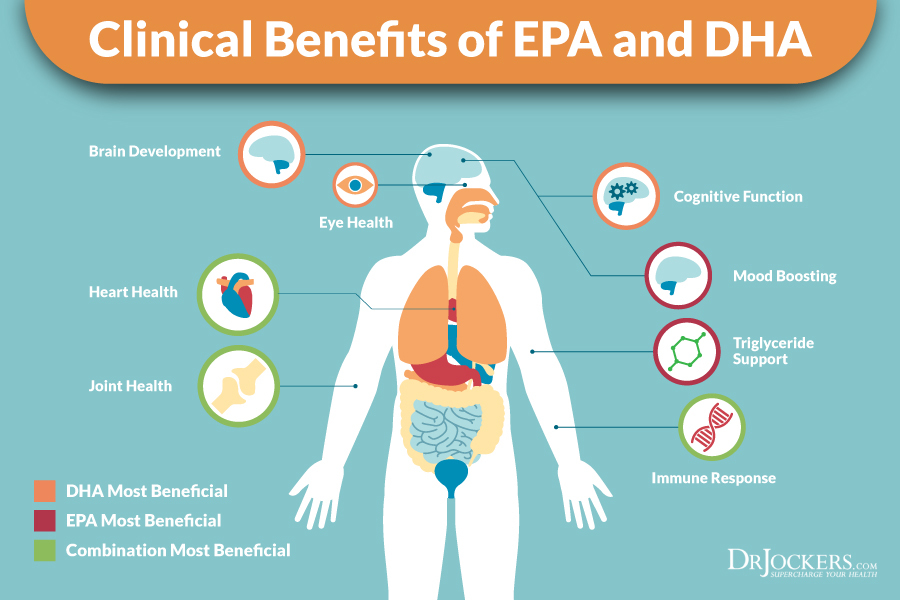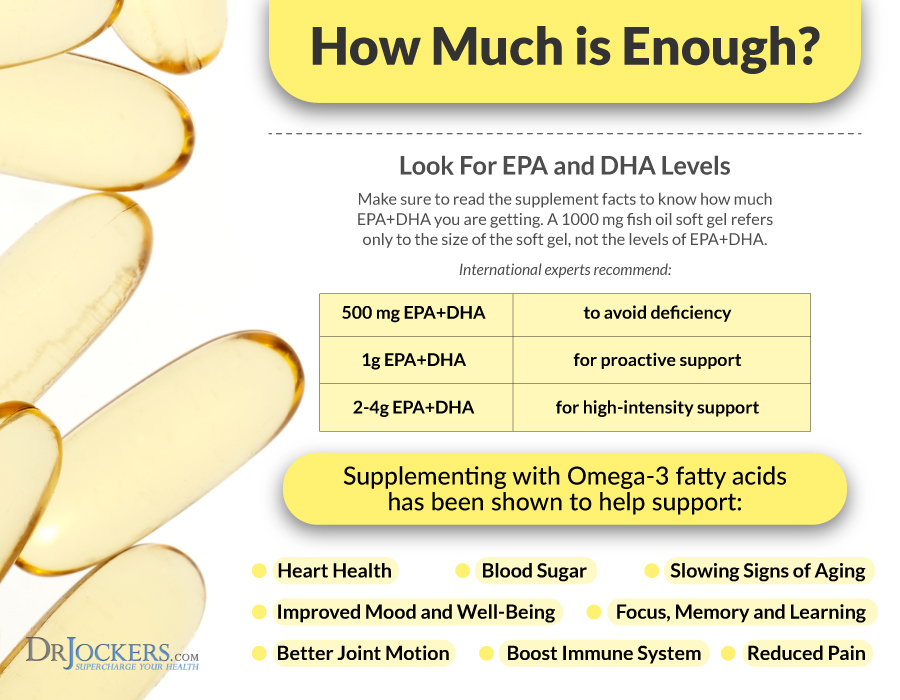
Omega 3 Fatty Acids and Cellular Health
Numerous studies are linking the intake of omega-3 fatty acids and improvements in cognitive function, visual acuity, and overall brain development. (1) Our western culture has introduced processed vegetable oils and man-made fats that are inflaming and retard normal brain growth. Increasing high quality, long-chain omega-3 fatty acids in the diet is a critical staple to supporting healthy brain function.
There are four distinct types of omega-3 fats that are differentiated based on the number of carbon atoms (C) they contain along with the number of double bonds (DB) they hold.
ALA: 18 C & 3 DB: Found in green plants, flax, chia, hemp, pumpkin seeds & walnuts
DPA: 20 C & 4 DB: Found in mother’s milk, algae, fish, & krill oil & grass-fed meat products
EPA: 20 C & 5 DB: Found in mother’s milk, algae, fish, & krill oil & grass-fed meat products
DHA: 22 C & 6 DB: Found in mother’s milk, algae, fish & krill oil & grass-fed meat products

The Structure of Omega 3 Fatty Acids:
The more double bonds within the structure the more fluid the fatty acid becomes. This is important because fatty acids are used to structure the membrane of every one of the trillions of cells within our body. A healthy cell membrane consists of very solid structures (saturated fats & cholesterol) and very fluid structures (polyunsaturated fats).
The fluid aspect of the cell is essential for the mobility and function of embedded protein receptors, diffusion of proteins and other molecules laterally across the membrane for signaling reactions, and proper separation of membranes during cell division. These fluid based fats are also very fragile and highly vulnerable to oxidative stress and heat.

The Nervous System and Omega 3 Fats:
The cell membranes within the brain, spinal cord, & nervous system are especially dependent upon fluid based membranes for proper signaling and neurotransmitter dynamics. The long chain omega 3 fatty acids, EPA & DHA with 5 and 6 double bonds, are very critical players in healthy nervous system function. (2) The brain is made up of 60% fat and 10-15% of that is DHA.
Optimal brain structure depends upon a healthy array of saturated fat and cholesterol on the membrane to hold the fluid based fats tight at the corners. Then a load of EPA & DHA in-between the solid structures to give it a great level of fluid mobility. A diet that is deficient in saturated fat, EPA, & DHA is very dangerous for the nervous system.
The body can and must convert ALA & DPA into the brain enhancing nutrients EPA & DHA if they are to be of any significant use in the body. This process depends upon the enzymatic systems within our liver. If we have any sort of liver toxicity, nutrient deficiencies, or chronic diseases or infections our ability to effectively convert ALA into EPA & DHA will be significantly hampered. (3)

Essential Fats are Fragile:
Because of the fragile aspect of essential fats, unhealthy individuals should always begin their healing process with a diet rich in phytonutrient antioxidants, zinc, magnesium, and B vitamins among other things.
A whole-food multi-vitamin or supergreens powder is also highly advisable at this time. After 2 weeks of introducing heavy loads of antioxidants into the system it is then time to begin introducing EPA & DHA in the form of purified fish oils into their system.
American culture takes in the majority of its fat in the form of processed vegetable oils and grain-fed meat products. These sources are very scarce in quality omega-3 fatty acids and therefore many are deficient in the necessary EPA & DHA for optimal brain development. Begin supporting your nervous system appropriately with an anti-inflammatory and antioxidant rich diet and purified EPA & DHA supplementation.

Fish Oil vs Vegetarian Sources:
Flax oil, chia seeds, hemp seeds, pumpkin seeds, walnuts and green leafy veggies provide small chain ALA omega-3 fatty acids. These are all good components to a healthy diet but most individuals will struggle with converting the ALA into EPA and DHA (4).
Blue-green algae sources provide small amounts of DHA which is much more preferable. For strict vegans the algae is definitely the best source of omega 3 fatty acids. Fish oil provides significantly more of the powerful long-chain EPA and DHA in a highly bioavailable form and is therefore the best source of these critical omega 3 fatty acids.
Fish Oil vs Krill Oil:
Krill oil is a fantastic product and if you feel like you are getting good results with it than I recommend continuing with it. The quality is typically very good but there are some downsides to krill and that is why I recommend a high-quality fish oil over the krill.
Fish oil contains significantly more EPA and DHA per serving than krill. In order to get a similar amount of these key fats from krill oil you will have to take a much larger amount which will increase the overall cost. It will cost the consumer roughly three times more to get the same amount of EPA and DHA from krill as it will from a high quality, purified fish oil.
Krill also has a sustainability question as it is the foundation of the food chain for many oceanic species. Commercial krill harvesting has been banned in several major oceans and the implications of over-harvesting krill are devastating (5).

Why Fish Oil:
Fish oil from clean waters is a superior source of omega 3 fatty acids because it is primarily the long-chain variety EPA and DHA. The fish oil should be purified of environmental toxins through a molecularly distillation process and tested to be safe and pure by a 3rd party lab. This is called a pharmaceutical grade and it should appear on the container.
The fish oil should be in the most absorbable triglyceride form that is easily digested and into the blood stream with minimal digestive energy (6). It should also be protected with fat soluble antioxidant extracts to prevent oxidation of the delicate long-chain fats.
The Importance of GLA:
Gamma Linolenic Acid (GLA) is a critical omega-6 fatty acid that can be found in borage oil, evening primrose oil, black current seed oil and hemp. Unlike other omega-6 fatty acids, GLA helps to control inflammation throughout the body when incorporated into the membranes of immune cells.
Research has shown that GLA regulates the inflammatory “master molecule” nuclear factor kappa B (NF-kB) and prevents it from switching on genes for inflammatory cytokines in the cell nuclei (7).
GLA has proven benefits in inflammatory diseases such as eczema, acne, asthma and rheumatoid arthritis. It is also shown to prevent the formation of atherosclerosis and cancer. The best clinical dosage of GLA is 250 mg per day.
Introducing ProEFA:
This is a supplement I personally take every day and I use this in my clinic for anyone that wants to optimize their health and improve their daily performance.
This product gives us a fully purified form of high quality omega-3 EPA/DHA and GLA. I recommend this product for healthier individuals who are just looking for general health maintenance and good performance.
The oil form contains 1 gram of EPA and DHA and 170mg of GLA. This definitely gives you the best bang for your dollar. The capsules provide the maintenance dosage of 0.5 grams of EPA/DHA and 70mg of GLA daily.







Hello, which omega 3 product and dose would you recommend for tinnitus?
Thank you, Jill
Hey Jill! You can read more about this here: https://drjockers.com/tinnitus/
I would generally recommend using this product on a daily basis to help: https://store.drjockers.com/products/pro-omega-crp
This class was in December 2018 so why am I STILL getting these emails from you after I unsubscribe?????? I thought I was signing up for something that is upcoming not months ago !!!!!! Pleased reply if you DARE!😡 what’s wrong with you people, we wanted to Trust in you😰 are you lying about OTHER things too? My friends & I want to know so we can TRUST SOMEBODY!!! So PLEASE REPLY TO US!!! Pretend we’re family
Hey Aggie, we reply to every email anyone sends us and the comments people put on our website. You are family to us!
Dr. Jockers,
You recommend taking ProEFA oil by Nordic Naturals.
They manufacturer does not have ProEFA oil anymore. They do have instead ProEFA 3-6-9 with EPA (610 mg), DHA (405 mg), GLA (170 mg) and Omega 9 Oleic Acid (400 mg). Would this product be the same at the one you recommend?
Hey Mirta,
Yes the Pro EFA 3-6-9 is a good one.